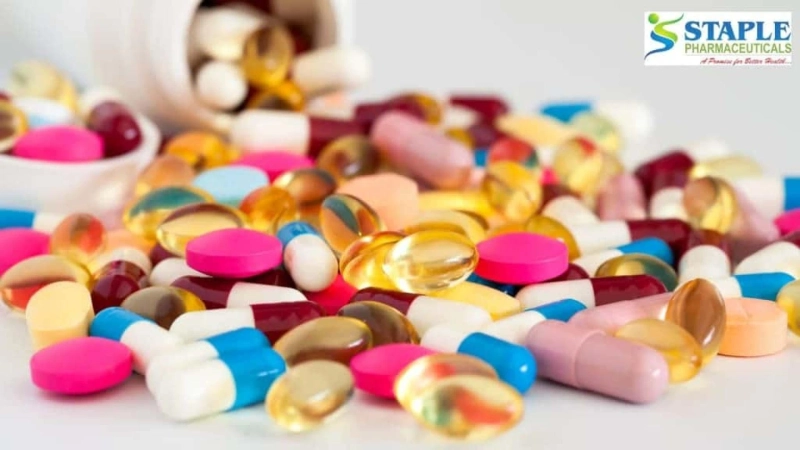The push toward biologics is promising because it could lead to more focused therapies and fewer side effects. The prevention, diagnosis, and treatment of cancer, autoimmune illnesses, and other diseases have all been transformed by biologics. With biologic patents starting to expire, this is an opportune time for the two therapeutic alternatives since biosimilars can potentially improve treatment accessibility in the pharmaceutical industry.
What are Biologics?
Since the 19th century, biologics have been used in immunizations and other medical procedures. In 1982, the U.S. The Food and Drug Administration (FDA) approved the first biologic produced by bacteria: human insulin. 2 Drugs classified as biologics are made from parts of living things, including people, plants, animals, and microorganisms.
Biologic examples include:
- Vaccines
- Blood and blood products
- Gene therapies
- Tissues for transplant
- Recombinant proteins
- Stem cell therapies
- Monoclonal antibodies
Since they are derived from living creatures, biologics are distinct from conventional pharmaceutical medications. They are harder to manufacture, contain larger molecules, and have a more complex structure.
What Diseases Can Biologics Treat?
The idea of biologics is not a recent one; it has been around for a while. Since the 1980s, biologics created using modern recombinant DNA technology have been employed to treat several disorders. Biologics have been influential in treating autoimmune illnesses, cancer, and genetic abnormalities as our knowledge of them has grown. The following conditions are now being treated using biologics thanks to a greatly expanded range of biologics:
- Immune-mediated illnesses include Crohn\'s disease, ulcerative colitis, diabetes, ankylosing spondylitis, rheumatoid arthritis, psoriasis, and psoriatic arthritis.
- Specific cancers include leukemia, lymphoma, breast, colon, and stomach cancer.
- Gaucher, sickle cell disease, hemophilia, cystic fibrosis, and other uncommon genetic diseases.
Biologics and Cancer
The delivery of attentive and personalized care through biological therapy has completely changed how oncology is treated. Immunotherapy using biologics encourages the immune system to target and attack cancer cells because cancer cells have mechanisms for avoiding immune system destruction. Simply put, it aids the body\'s immune system in battling cancer cells.
Biologic therapy has been shown in some types of cancer to target, destroy, and inhibit the spread of cancer cells. It may have fewer side effects than conventional cancer treatments while not being as popular as chemotherapy and radiation therapy. Biologics that have been created to reduce the growth of tumors are available. Before the development of biological medicines, there was no successful course of treatment for several forms of advanced or metastatic malignancies.
How Do Biosimilars Differ From Biologics? What Are Biosimilars?
New legislation was introduced to facilitate the development of biosimilars to increase treatment options, broaden access, and reduce costs due to the high cost of biologics. Manufacturers can apply for clearance to market a biosimilar, a similar version of the original biologic drug, when regulatory exclusivity and intellectual property issues for a biologic are handled.
Biosimilar products must closely resemble the original "reference product," according to the FDA. Producers must demonstrate that biosimilars:
- They can be taken the same way as the original biologic medication because they function and have the exact dosage and strength.
- Neither their safety nor efficacy compared to the original biologic medicine show clinically significant differences.
- A production process that meets the same high standards as the original products.
By eliminating the needless repetition of clinical studies, the creation of biosimilars conserves time and resources.
The Distinction Between Generic and Biosimilar Drugs
Biosimilars differ from generic medications because they are not perfect replicas of the reference biologic but are very similar to their active ingredient. Small molecules, which make up generic medications, are simple to duplicate and reproduce. The active component of a brand-name medicine and a generic drug are the same. Like other biologics, biosimilars are subject to inherent variability and may differ slightly in clinically inactive components, but they are comparable to the original product. Generic and biosimilar medications give certain patients a more economical treatment choice.
Future of Biosimilars and Biologics
Without question, biologics have improved the way that cancer, autoimmune diseases, and genetic illnesses are treated, improving the futures of numerous people. No compromises are made in the product\'s safety, quality, or efficacy thanks to the FDA\'s standards for drug approval. This is true whether the treatment is a biologic or a biosimilar. Regardless of the treatment method, both cutting-edge approaches signal promising new directions in managing complicated diseases like cancer.
Conclusion -
With so many pharmaceutical companies working hard to create biosimilar versions of popular biologics whose exclusive patents will expire, including both traditional generics players and innovators, there is little question that biosimilars will eventually acquire more traction in the upcoming years. Due to the high manufacturing costs, the complexity of production, and ambiguous regulatory laws associated with the creation of these pharmaceuticals, only a small number of these companies will have the financial means to compete in the biosimilar market.


